Boundary Formation of the Human Caudal Foregut during the Early Fetal Period: Three-Dimensional Analysis Using T1-Weighted and Diffusion Tensor Images
- PMID: 40545814
- PMCID: PMC12283065
- DOI: 10.1159/000546997
Boundary Formation of the Human Caudal Foregut during the Early Fetal Period: Three-Dimensional Analysis Using T1-Weighted and Diffusion Tensor Images
Abstract
Introduction: While caudal foregut development in human fetuses has been outlined in previous research, the formation of its border region remains unclear. This study aimed to visualize the precise timeline of caudal foregut boundary formation.
Methods: Three-dimensional images of the foregut from T1-weighted scans of 24 fetuses (crown-rump length [CRL]: 34-103 mm) were analyzed to measure the wall thickness and lumen diameter at nine specific sites. The internal structure in the border region was verified using histological sections and diffusion tensor imaging (DTI) tractography.
Results: The lower esophageal and pyloric canal walls were thicker in samples with a CRL ≥50 mm. The esophageal wall at the esophageal hiatus, where the lower esophageal sphincter is located, was particularly thick in samples with a CRL ≥88 mm. Increased wall thickness at the esophageal hiatus and pyloric canal resulted in a narrower lumen. The pyloric canal lumen narrowed from its distal to proximal sections. The lumen diameter-to-wall thickness ratio at the esophageal hiatus and proximal pyloric was negatively correlated with CRL. The thickened esophageal wall at the esophageal hiatus had a thick submucosa, and all layers in the pyloric canal thickened with growth. DTI tractography revealed that the lower esophageal wall mainly comprised longitudinal fibers, whereas the pyloric canal wall consisted solely of circular fibers, with fractional anisotropy increasing with growth.
Conclusion: This study provides a comprehensive timeline of normal caudal foregut boundary formation during the early human fetal period, thereby improving the understanding of congenital foregut obstruction pathogenesis.
Keywords: Boundary formation; Caudal foregut; Diffusion tensor imaging tractography; Human early fetal period; Three-dimensional analysis.
© 2025 The Author(s). Published by S. Karger AG, Basel.
Conflict of interest statement
The authors have no conflicts of interest to declare. Shigehito Yamada was a member of the journal’s editorial board at the time of submission.
Figures
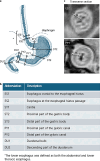

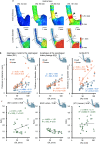
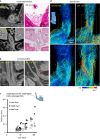
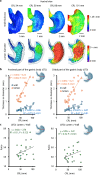
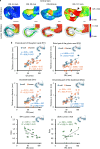
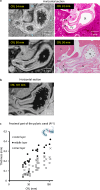
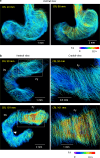
Similar articles
-
Comparative study of 2D vs. 3D AI-enhanced ultrasound for fetal crown-rump length evaluation in the first trimester.BMC Pregnancy Childbirth. 2025 Jul 16;25(1):766. doi: 10.1186/s12884-025-07823-6. BMC Pregnancy Childbirth. 2025. PMID: 40670955 Free PMC article.
-
Is Proximal Femur Reconstruction With a Vascularized Fibula and Allograft Successful at Reconstructing a Tumor Resection in Children 6 Years of Age or Younger?Clin Orthop Relat Res. 2025 Feb 18;483(7):1325-1334. doi: 10.1097/CORR.0000000000003414. Clin Orthop Relat Res. 2025. PMID: 39964135
-
Embryonic growth discordance and early fetal loss: the STORK multiple pregnancy cohort and systematic review.Hum Reprod. 2013 Oct;28(10):2621-7. doi: 10.1093/humrep/det277. Epub 2013 Jul 11. Hum Reprod. 2013. PMID: 23847112
-
Three-dimensional morphogenesis of the human diaphragm during the late embryonic and early fetal period: Analysis using T1-weighted and diffusion tensor imaging.J Anat. 2023 Feb;242(2):174-190. doi: 10.1111/joa.13760. Epub 2022 Sep 2. J Anat. 2023. PMID: 36053545 Free PMC article.
-
Platelet count, spleen length, and platelet count-to-spleen length ratio for the diagnosis of oesophageal varices in people with chronic liver disease or portal vein thrombosis.Cochrane Database Syst Rev. 2017 Apr 26;4(4):CD008759. doi: 10.1002/14651858.CD008759.pub2. Cochrane Database Syst Rev. 2017. PMID: 28444987 Free PMC article.
References
-
- O’Rahilly R. The timing and sequence of events in the development of the human digestive system and associated structures during the embryonic period proper. Anat Embryol. 1978;153(2):123–36. - PubMed
-
- Bourdelat D, Barbet JP, Chevrel JP. Fetal development of the pyloric muscle. Surg Radiol Anat. 1992;14(3):223–6. - PubMed
-
- Malinger G, Levine A, Rotmensch S. The fetal esophagus: anatomical and physiological ultrasonographic characterization using a high-resolution linear transducer. Ultrasound Obstet Gynecol. 2004;24(5):500–5. - PubMed
-
- Koyuncu E, Malas MA, Albay S, Cankara N, Karahan N. The development of fetal pylorus during the fetal period. Surg Radiol Anat. 2009;31(5):335–41. - PubMed
-
- Ernst LM, Ruchelli ED, Huff DS. Chapter 3. Color atlas of fetal and neonatal histology. In: Ernst LM, Ruchelli ED, Huff DS, editors. Gastrointestinal tract. Berlin: Springer Science and Business Media; 2011. p. 39–65.
LinkOut - more resources
Full Text Sources

